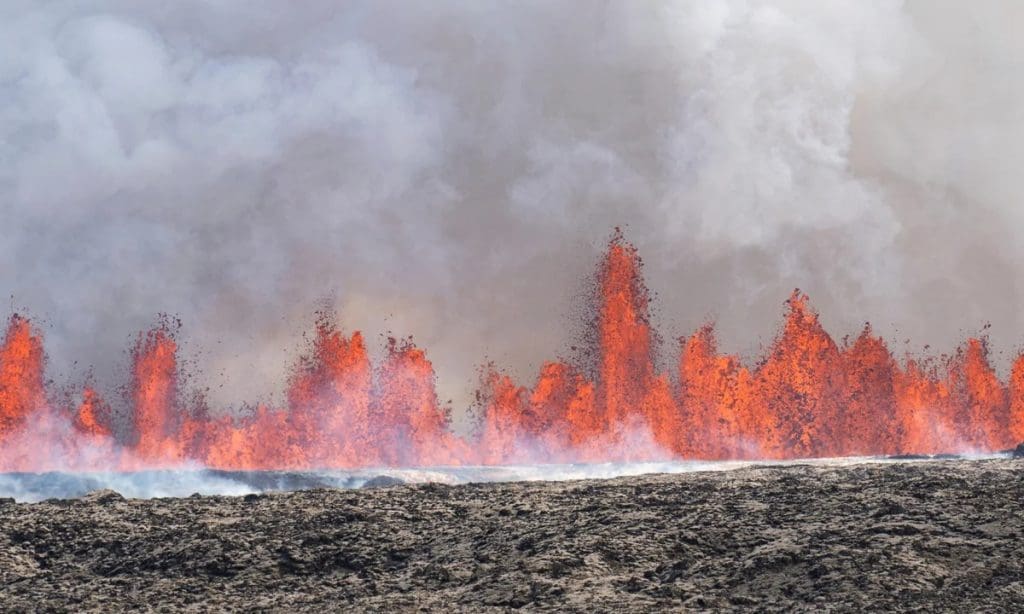A new volcanic eruption occurred late Thursday on Iceland’s Reykjanes Peninsula, marking the sixth eruption in the area since December 2023, according to The Telegraph.
The eruption started at 9:26 p.m. local time (21:26 GMT) at the Sundhnuksgigarod site, following a series of earthquakes. Live footage showed bright orange lava bursting from a fissure and lighting up the night sky.
The Icelandic Meteorological Office (IMO) initially estimated the fissure’s length at 1.4 kilometers (0.86 miles), which quickly extended to 3.9 kilometers within 40 minutes. Seismic activity continued at the fissure’s northern end more than an hour after the eruption began.
Isavia, Iceland’s airport authority, confirmed that flights are operating normally despite the volcanic activity.
The eruption follows one that ended just two months ago after lasting over three weeks. Authorities have been taking precautions in nearby areas, including Grindavik, a fishing village where most residents had already evacuated before a December eruption. Only a few residents remain overnight.
The IMO had predicted further eruptions due to increased seismic activity and magma buildup under the Svartsengi area, home to a key power plant supplying electricity and water to about 30,000 people. The plant has been run remotely since December, with protective barriers in place.
The Reykjanes Peninsula had not seen volcanic eruptions for 800 years before March 2021. Since then, there have been additional eruptions in August 2022 and July and December 2023, suggesting a new period of volcanic activity in the region.
Iceland, located on the Mid-Atlantic Ridge, has 33 active volcano systems, the highest number in Europe.


